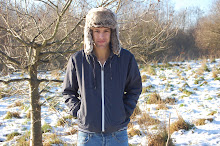The Ghosts linger longer than they should. There's something unfinished about it, the way they just left. Nothing was tidied away, nothing was hidden. It feels too much like a document, too real to be palpable.
Temple Works In Holbeck, Leeds is re-opening as a multi purpose arts space. The old flax mill and, until recently, the distribution centre for Kay's catalogue.
The current exhibition, Final Days explores the site as it was found: the hastily abandoned offices of Kay's depot have been left untouched until now. Grease still stains the Kitchen wall, cups are left where they were placed, cleaning equipment left to rot. Signs are awkwardly outdated, the whole building seems to bare itself embarrassingly, one feels they shouldn't be seeing it in this state.
